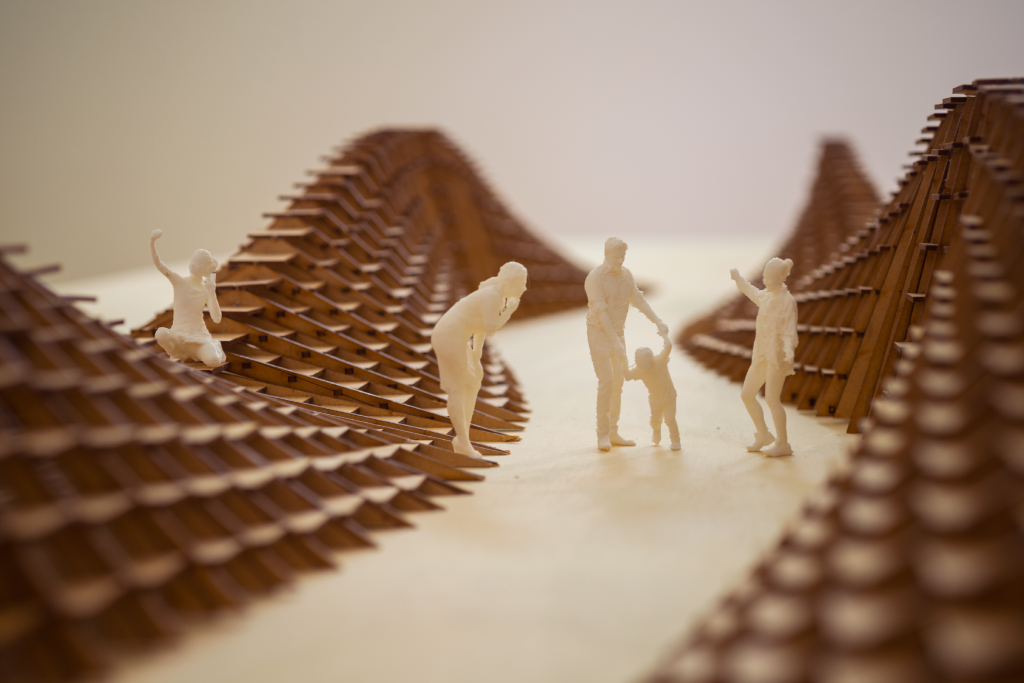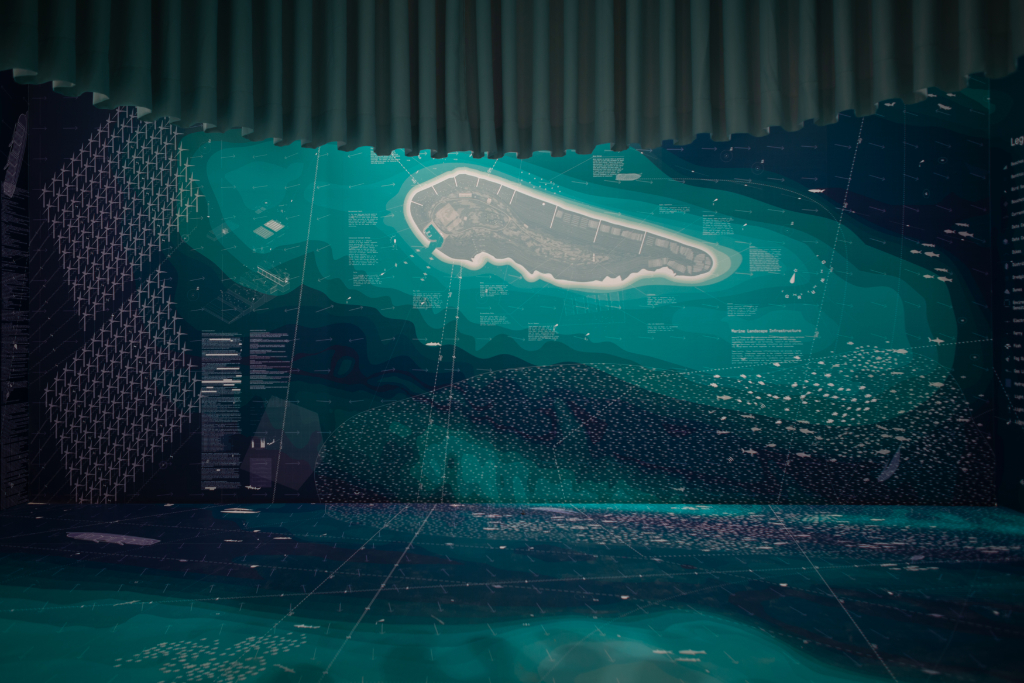Text by Daniela Silva

The number of architecture and design events occurring in cities worldwide has significantly increased during the past 20 years. The design community has continuously expanded since the first noteworthy architecture exhibition at New York’s Museum of Modern Art (MoMA) in 1932 to give deserved platforms for discussing and displaying ideas that could impact the world’s future.
Such events in architecture, however, only succeed when they significantly contribute to humankind and its future. Hence, addressing the “why” and “how” of managing such a massive responsibility, mainly when such events have also evolved into commercial endeavours.
Architecture shows were valued differently by experts and non-experts. Many events were open to industry and architecture professionals before being opened to the general public. There were two main winners in such a designer-only environment. First, the participants were given a stage to share their ideas and solutions with the world while simultaneously receiving the bonus of free advertising.
Such design events have, in the past, made historical milestones in architecture like Modernism and Deconstructivism, as well as the designers who advocated these ideas, more well-known. Second, onlookers or young designers incorporate various concepts in their work. Constantly innovating, these designers eventually give back to the community.
Design events have a higher opportunity to engage the audience than art exhibitions. Due to its visual appeal and wow factor, art attracts more visitors and sparks greater curiosity. Architectural exhibitions have evolved into merely artistic displays that lack a strong message for the design community. It’s time to relearn the fundamental concepts that led to the creation of this communication medium. Architecture events can effectively communicate the importance of architecture to the general public. Additionally, it is a chance for us to impart our professional knowledge while putting them on the right path for the foreseeable future of design and construction.
Cities serving as hosts and design events are closely related. International activities that reach out to the periphery assist in culturally enriching the discussed topic, enhancing diversity and universality; the city stops considering how it wishes to represent and define itself.
On the other side, administrations and businesses benefit from a guaranteed level of interest and a rise in foot traffic in the name of tourism at a specific time and interval. This enhances investment, raising output quality in the process. The challenge in this situation is striking a balance between the interests of the many stockholders.
Every event might benefit from a theme. Themes give designers a framework and direction for creativity. They also link the various compositions together to form a cohesive story. Without a theme, the audience will choose which exhibition to visit. A significant development in the selection of themes over the past few years is the urgency with which they address current and emerging problems.
The idea of hosting a gathering of top experts from around the world has received powerful and varied responses from designers that give it new meaning. Architects have provided compelling and exciting responses that give new life to hosting a gathering of the world’s top experts. Good design availability is growing due to globalisation and the popularity of hosting design congregations.
As a designer, more than recognising a problem is frequently required. Making significant innovative contributions and being a part of the solution is crucial. The chance to participate in such events with a global audience comes with a unique set of duties. The designer must comprehend that their work is more than simply a fleeting aesthetic shape; it is a way to solve the problem at hand and raise the worth of its host.
There is a demand for designers to come up with solutions to deal with the new normal, given that the world is currently experiencing a pandemic. However, this is also a chance to evaluate our way of life and the adjustments required to have a long-term beneficial effect on society.
A vast range of social consequences and connotations are associated with architecture. Architecture displays are evaluated on several criteria, from the architect’s ideology to its influence on society. Although organising and curating design events is challenging, it plays a crucial role in boosting the design community and closing the gap between designers and non-designers.
Every three years, the Lisbon Architecture Triennale holds a central forum for debating, discussing, and disseminating architecture across geographic and disciplinary boundaries. Every new edition has an opportunity to explore and break the limits of how architectural events are presented to the world; however, they often result in wasted opportunity.
This year was no different. The Architecture Triennale, with the theme Terra (Earth), invaded the galleries in Lisbon with proposals for the world that encouraged us to look at the planet that is our home.




Terra was the 6th edition of the Lisbon Architecture Triennale, chief-curated by Cristina Veríssimo and Diogo Burnay. To embrace Planet Earth, our typical home, Terra examined global communities. What are the various scales at which resource depletion, socioeconomic inequality, and climate change initiatives interact?
As a call to action, Terra can change the fragmented, linear system of cities as machines into a circular, comprehensive model of cities as creatures. Terra was inspired by shared local observations from throughout the world. An exchange of ideas and methods that compassionately envisions a more sustainable future, where new paradigms reinvent our ways of creating places on globalised earth, is the outcome of a three-year-long collective exploration.
The Triennale 2022 proposed that knowledge and practices may be intersected and exchanged to create a more sustainable future for the earth and its people. The sixth edition of the Lisbon Architecture Triennale examined energy, water, human labour, carbon footprint, migration, land tenure, sanitation, overcrowding, waste, violence, mobility, and geological vulnerability.
Four special exhibitions revealed projects, initiatives, visions, and practices that can contribute to a more sustainable future for the planet and its inhabitants. These more general study techniques and interests examine how these realised and unrealised ideals (might) affect our society and environment and how they (could) alter our cities and landscapes — our planet, Terra.
The 14-week programme included exhibitions, conferences, talks, seminars, awards, publications, and 16 other proposals in various formats that were added by the Independent Projects to the main programme to further the conversation about Terra.
Multiplicity
Most of the world is building itself – without architects. How can the design and architectural fields be reformed to address escalating inequality, climate change, and conflict? Cities are growing at a rate that has never been seen before.
As well as providing examples of projects at various scales that broaden the definition of architecture, its forms, and its protagonists, Multiplicity presented a variety of collective or informal processes from the Global South that adapt and subvert modes of action with ad hoc methods to address these global challenges.
Cycles
Building construction and demolition leave behind a shapeless pile of accumulated materials from various sources. Therefore, the architectural project must go beyond simply organising these components in a certain way and plan how these resources will be distributed through time, working on the cyclical flows of the materials themselves.
Cycles examined the place of architecture within the never-ending processes of matter transformation and redistribution. They acknowledged the energy, water, human labour, and carbon footprint embedded in the production of materials. It also illustrated the potential interactions between architecture, sustainability, economy, heritage, and memory.
Visionaries
What are the opinions of the designers, artists, engineers, and others who hope to alter the world fundamentally? This exhibit looked at the creation process and visionaries who suggest a different hierarchy. Their plans went beyond simple physical and spatial architecture to include ambitious and contentious planetary strategy recommendations. As a result, future generations can effectively interpret these radical prototypes in various forms, from bedroom size to city models.
Regardless of the fantastic effort from both curators, it is instead a failed attempt from the Triennale to exploit new ideas and formats. It is evident by now that while the rest of the architecture industry evolved in many directions (whether due to the recent pandemic or to technological advancements), the Lisbon Architecture Triennale offers resistance to change as it opened its new edition, following once again its traditional (and rather dull) format. With so much change happening in the world, it’s clear that architecture must adapt and evolve as well.
The question remains: when will we face a radical reform in promoting contemporary architectural trends? And in doing so, wouldn’t it be an opportunity to address long-held concerns over its relevance, accessibility, and environmental impact?






